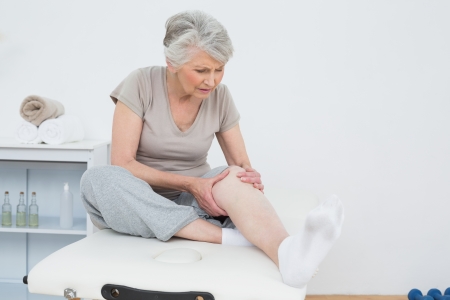
Deep Vein Thrombosis (DVT) is a blood clot that forms in a deep vein in the body. Blood clots are where blood thickens and clumps together.
Although deep vein blood clots may occur anywhere in the body, they mainly occur in the lower leg or thigh. The danger to these blood clots is that they can break off and travel through the bloodstream. At this point, the loose blood clot is called an embolus and it can travel to an artery in the longs and block blood flow. This condition is known as pulmonary embolism- it can damage the lungs as well as other organs in the body and even lead to death.
What causes deep vein thrombosis?
- Blood clots can form in your body’s deep veins if:
- A vein’s inner lining is damaged. Injuries caused by physical, chemical, or biological factors can damage the veins. Such factors include surgery, serious injuries, inflammation, and immune responses.
- Blood flow is sluggish or slow. Lack of motion can cause sluggish or slow blood flow. This may occur after surgery, if you’re ill and in bed for a long time, or if you’re traveling for a long time.
- Your blood is thicker or more likely to clot than normal. Some inherited conditions (such as factor V Leiden) increase the risk of blood clotting. Hormone therapy or birth control pills also can increase the risk of clotting.
Who is at risk for deep vein thrombosis?
Risk factors include:
- A history of DVT
- Conditions that make your blood thicker or more likely to clot (hormone therapy or birth control pills also increase the risk of clotting)
- Injury to a deep vein from surgery, broken bone, or other trauma
- Slow blood flow in a deep vein due to lack of movement.
- Pregnancy and the first 6 weeks after giving birth
- A central venous catheter
- Old age (Being older than 60 is a risk factor for DVT)
- Overweight or obesity
- Smoking
What are the signs and symptoms of deep vein thrombosis?
The signs and symptoms of deep vein thrombosis (DVT) might be related to DVT itself or pulmonary embolism (PE). See your doctor right away if you have signs or symptoms of either condition. Both DVT and PE can cause serious, possibly life-threatening problems if not treated.
Only about half of the people who have DVT experience signs and symptoms. These signs and symptoms occur in the leg affected by the deep vein clot. They include:
- Swelling of the leg or along a vein in the leg
- Pain or tenderness in the leg, which you may feel only when standing or walking
- Increased warmth in the area of the leg that’s swollen or painful
- Red or discolored skin on the leg
Pulmonary Embolism Symptoms
Some people aren’t aware of a deep vein clot until they have signs and symptoms of PE. Signs and symptoms of PE include:
- Unexplained shortness of breath
- Pain with deep breathing
- Coughing up blood
- Rapid breathing
- Fast heart rate
How do compression stockings help treat deep vein thrombosis?
Graduated compression stockings can reduce leg swelling caused by a blood clot. These stockings are worn on the legs from the arch of the foot to just above or below the knee. Compression stockings are tight at the ankle and become looser as they go up the leg. This creates gentle pressure up the leg. The pressure keeps blood from pooling and clotting.
There are three types of compression stockings. One type is support pantyhose, which offer the least amount of pressure. The second type is over-the-counter compression hose. These stockings give a little more pressure than support pantyhose. Over-the-counter compression hose are sold in medical supply stores and pharmacies.
Prescription-strength compression hose, the third type of compression stocking, offer the greatest amount of pressure. They also are sold in medical supply stores and pharmacies. However, a specially trained person needs to fit you for these stockings. You should always speak with your doctor about how long you should wear compression stockings.
At BEK Medical, we carry a wide range of different compression stockings and other styles of therapeutic hosiery. Our products are ideal for anyone suffering from DVT, similar medical conditions, and who may be recovering from illness or surgery.
Browse our collection of compression products online today!
